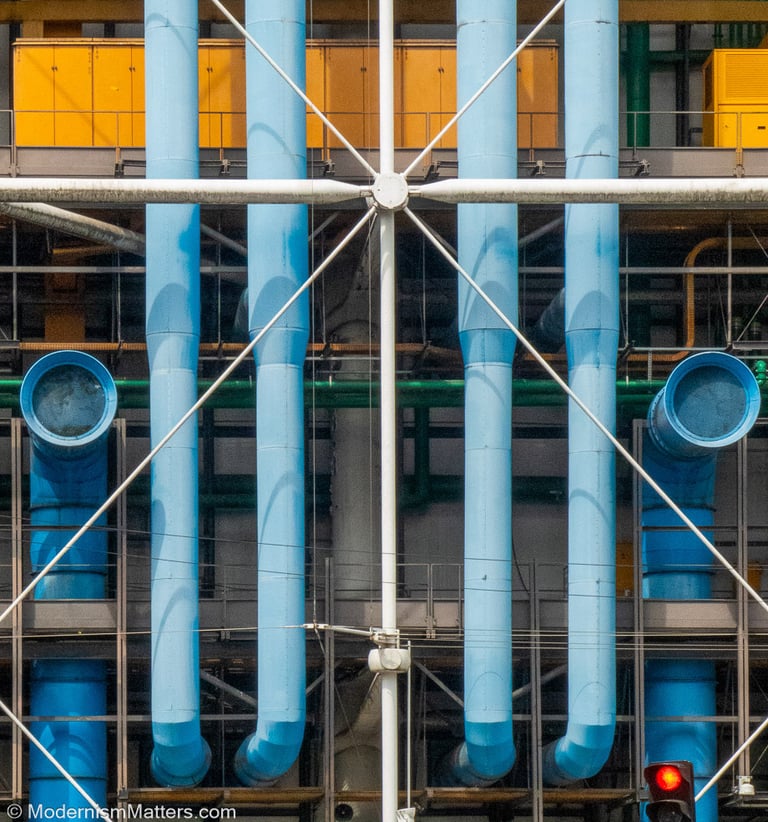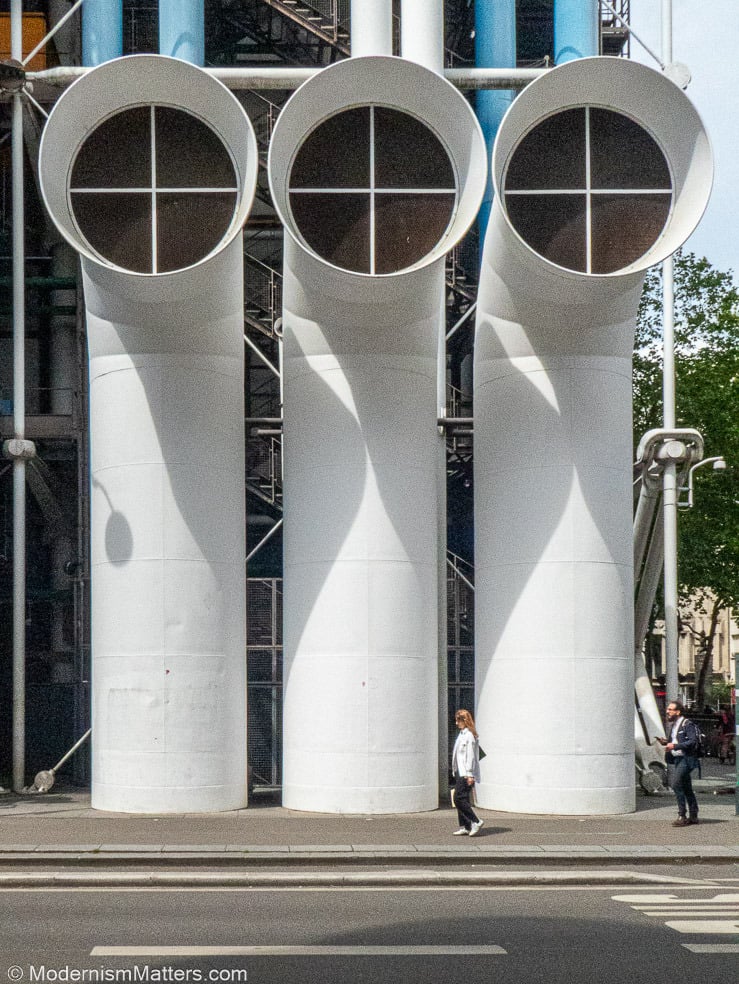Au revoir (for now), Pompidou Centre


Paris is about to lose (albeit temporarily) one of its great cultural hubs. The Pompidou Centre, home to France’s National Museum of Modern Art, a cinema, music research institute, and temporary exhibition spaces, is shutting its doors for an extensive five-year restoration and refit – a closure that will be keenly felt by locals and visitors alike.
Over its relatively short lifespan, the Pompidou Centre has ingrained itself into the fabric of Parisian life. A conspicuous feature of the city’s skyline ever since its completion in 1977, the Pompidou was a pioneering example of the then-nascent ‘high-tech’ architectural style, and provided a springboard for the careers of its principal architects, Richard Rogers and Renzo Piano. Famed for its colourful and structurally expressive ‘inside-out’ configuration – the building’s framework and services (water pipes, ventilation ducts, etc.) being positioned on its exterior to optimise internal space – the Pompidou Centre resembles a vast, oblong-shaped factory, over 160 metres in length, with a cavernous, column-free interior arranged over six floors.
Though the Pompidou Centre has become something of a ‘must visit’ fixture on the Paris tourist itinerary, up there with the likes of Le Louvre and the Musée d'Orsay, it hasn’t all been plain sailing for the building known colloquially as ‘Beaubourg’. The unconventional and uncompromisingly modern design of the Pompidou generated much initial controversy and was derided by the French media (including Le Monde), though the building was also received with acclaim by others.
However, the ‘shock of the new’ lent the Pompidou a notoriety that helped to ensure it was an immediate hit with the public, with huge visitor numbers in its first few months of opening in 1977, and it’s been pulling in the crowds ever since. In 2023 the Centre was ranked in the top 20 most visited art museum complexes in the world, according to an annual survey conducted by The Art Newspaper.
The Pompidou Centre was always intended to make a bold statement, its striking ‘oil refinery-esque’ aesthetic and relative loftiness compared to its immediate neighbours, doing little to meld the building into its heritage surroundings near the Marais, one of Paris’s most historic districts. When reflecting on the Pompidou’s legacy in 2017, even architect Renzo Piano conceded that placing what he calls a “spaceship” in the centre of Paris “was a bit mad but an honest gesture…brave but also a bit impolite, for sure”.
Frustratingly, the experiences of the Pompidou Centre have also shown that high-tech architecture can be high-maintenance. The building’s ‘inside-out’ design presented a highly inventive solution to achieving an uninterrupted interior and, theoretically at least, simplifying building upkeep. However, exposing service pipes and equipment on a building’s exterior doesn’t, as the architecture critic Rowan Moore outlines, “make it easier to maintain” rather it “multiplies by a large factor the amount of surface exposed to the weather”. Indeed, water corrosion has plagued the Pompidou’s steel fabric, with the Centre being treated for rust as early as the mid-1990s. It’s been reported that the building’s upcoming closure is, in part, to address issues such as corrosion.
Negative press, aesthetic conflicts with existing surroundings, and problems stemming from innovative design engineering, can be par for the course with avant-garde architecture. Such issues aside, though, it is clear that the Pompidou Centre, with its broad accessibility and enduring public appeal, will be a much-missed cornerstone of Paris’s cultural offer over the next five years. So, here’s to a successful revamp and see you anew in 2030, Pompidou!


